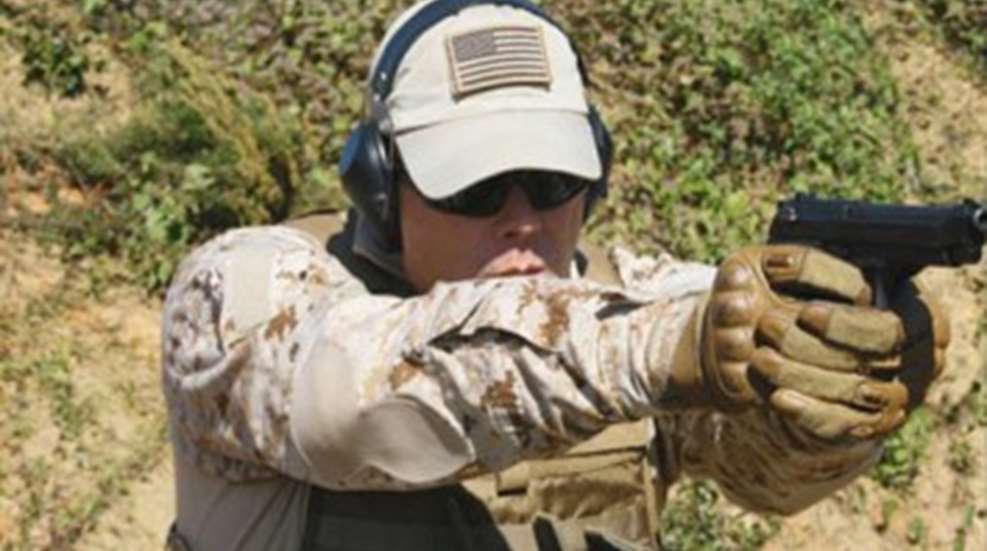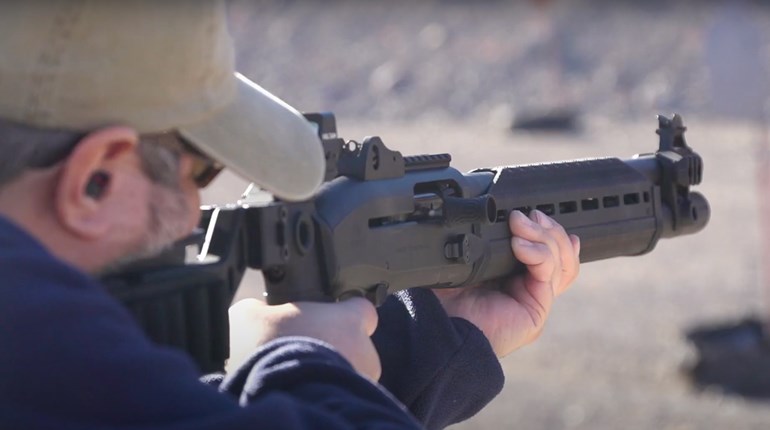
If you are an avid reader of this magazine you likely are familiar with the adoption of the Beretta Model 92 pistol by the United States military. Actually it's the U.S. Army that has final say regarding small arms procurement, but that is too deep for one article.
The Beretta 92 was officially adopted by the service in 1986 and became the "M9." Pistols went first to Tier One units and then began to trickle down to all branches. I was on active duty when this occurred. During my first two years in the Marine Corps, I carried an M1911A1 .45 ACP pistol. Then, seemingly overnight, a shipment of brand new M9 pistols arrived. The armorers boxed up the old guns and we began the training and familiarization process with the new ones.
In all fairness, the M1911A1 pistols we were using at the time were beyond worn out. They were World War II vintage, at the time 40-plus years old. It was time for a change. The new pistol had a 15-round magazine, twice that of the M1911A1.
The Beretta M9 Beretta is a standard double-action pistol. The first round is fired via a long, hammer-cocking, double-action trigger press. Successive rounds are fired with a hammer-releasing, single-action press. The pistol chambers the 9x19 mm NATO cartridge.
As for specifications, the pistol has a 4.9-inch barrel and an overall length of 8.5 inches. The empty weight is 35 ounces. Beretta refers to the finish as "Bruniton matte black." Both the front and rear sights are fixed. A decock/safety lever is located on the rear of the slide and is ambidextrous. Yes, that's a point of contention among many but not something we have time to address here. While the magazine-release button is not "ambi," it can be switched from left to right by an armorer or skilled user.
Running the Gun
A few years ago a friend of mine from the Special Operation Command commented that there really is no such thing as "high-speed" shooting techniques. There is simply the mastery of the fundamentals.
Most shooters are taught the fundamentals of weapons handling and then go about applying them haphazardly, or as we termed it in the Corps, "half-ass." Time and time again, when a student fouls his weapon though improper technique or misses his target, the primary cause is failure to apply the fundamentals of either weapons handling or marksmanship.
Far too often, we muddy the waters of weapons handling with multiple techniques. Shooters are taught three or four different ways to load, reload, speed load, combat load, tactical load, etc. Rather than become a master of a single loading method, they become amateurs at several.
If we are discussing a field of endeavor that is purely recreational, this really is not a big deal. However, the use of a military handgun very likely is a matter of life and death. We use arms to keep ourselves alive and the enemy dead. It is not the venue to start playing "What technique should I use?"
Keep it simple. When initially loading your pistol, hold the M9 in your strong hand and drop your elbows to your rib cage. This brings the gun into your "power zone" or "work space." Insert a magazine firmly, without slamming it, into the magazine well. At this point, the palm of your hand should seat the mag solidly in place.
Rotate the pistol inboard with your strong hand. With your support (non-dominant) hand grasp the slide, pull it forcefully to the rear and let it go. Let the recoil spring drive the slide home and chamber a round. Resist the temptation to "ride" the slide home. This will only serve to slow you down and potentially foul the process.
Regarding the press check, it's important to keep in mind this is an administrative action not a tactical one. The Beretta M9 has an external extractor that protrudes slightly when a round is chambered. You can look at and feel the extractor. New shooters continuously foul their weapons and take the slides out of battery by half-hearted or improper press checks.
Reloading an empty pistol is conducted in an identical fashion. Drop the elbows to the ribs to bring the pistol into your power zone. Keep it up at eye level—your eyes will follow your hands.
Release the empty magazine with the strong hand and let it fall to the ground. At the same time, your support hand should retrieve a fresh magazine and insert it into the well. Roll the pistol over and rack the slide.
Fix It! Clearing Stoppages
The two most prevalent stoppages or unintentional interruptions in the cycle of operation are the failure to feed/fire and the stove-pipe/ejection port obstruction. The least prevalent, but still a daunting stoppage is adouble-feed.
When your pistol goes "click" instead of "boom" or refuses to go boom in the first place, you must employ the most efficient and rapid means possible to get it back up and running. Fortunately, if you have followed the aforementioned steps for loading and reloading a pistol you already have the motor skills in place.
Should you encounter an unexpected stoppage, simply drop your elbows to your rib cage and bring the weapon to the upper chest. Tap the magazine base with your support-hand palm to ensure it is seated properly. An unseated magazine is a common culprit.
Immediately after tapping the magazine firmly, one time only, rotate the pistol inboard and grasp the slide and rack it vigorously to the rear. This allows the extractor/ejector combination to clear out the chamber and the slide to pick up a fresh round.
If you find your pistol is empty, perform a rapid reload and get back on target. Otherwise your pistol should be back in action and ready to address the threat. If you are having a really bad day and the pistol has a double-feed, the "Tap, Rack" method will make this stoppage painfully obvious.
To clear a double feed you first need to relieve the recoil spring pressure by locking the slide to the rear. Then, rip out the offending magazine. Next, rack the slide two or three times to clear the ammo traffic jam. Finally, insert a fresh magazine, chamber a round and address the threat.
All of the aforementioned actions are performed in the power zone and the physical movements are nearly identical. This cuts mental clutter. Rather than needing to learn three different methods to load, reload and clear stoppages, you can perform all of these with one basic set of motor skills.
Master the Trigger
The millisecond the firing pin strikes the cartridge primer, the gun is on auto-pilot. The entire cycle of operation is set in motion and is completed a fraction of a second later. All you need to do is depress the trigger far enough to cause ignition. It sounds pretty simple, right?
This is both simple and complex at the same time. In order to consistently strike your target, you need to hold the pistol as still as humanly possible. However, to make the pistol fire you must apply muscle pressure to the gun at the trigger. You're putting pressure or movement on the firearm while at the same time attempting to hold it steady. This is why mastering the trigger is so critical.
Mastering the trigger can be a daunting task for some shooters. As the M9 is a standard double-action pistol, you first must deal with a long, heavy double-action trigger press. Trigger pulls on M9 fall in the fair to horrible category. How do you teach yourself or "learn" the DA trigger? Dry fire.
Dry fire is simply training without ammunition. I cannot stress enough the importance of dry-fire practice. Any physical skill requires thousands of repetitions to master and pressing the trigger is no different. Be sure you are using the pad—or the fingerprint—of the finger to make contact with the trigger, not the knuckle or tip.
Beware of the temptation to simply snap or jerk the trigger. Focus on your front sight. It should be crystal clear in your vision. Press the trigger deliberately to the rear until the hammer falls without disturbing the front sight. If you have a training partner, have them place a coin or washer on the slide. When you can perform a complete double-action trigger press without dropping the coin, you are on your way to mastering the trigger of the gun.
Step two toward mastering the M9 trigger is to understand and utilize your single-action trigger reset. After the weapon has fired and the hammer is cocked for single action, the shooter only needs to release the trigger a fraction of an inch to re-engage the reset for the next shot.
Shooters need to practice working the single-action trigger by allowing it to travel just far enough forward to reset. This greatly minimizes the motion and force placed on the pistol. You have greater control for rapid and precise follow-up shots.
Dry-fire practice for the SA trigger reset is easily conducted by completing a DA trigger press then holding the trigger to the rear. Reach up with your non-firing hand and rack the slide. Now ease the trigger out just far enough to reset it.
Parting Shots
When kept clean and well maintained, the M9 can be counted on to put rounds effectively on target. Like a reliable work truck, it will get you where you need to go. The DA/SA trigger function does indeed require effort on the part of the shooter to master.
Training is the key, both live and dry-fire. Paper targets are nice, but steel reactive targets are more challenging. Steel doesn't lie. If you hit it you are rewarded with a "ding." Miss it and you get nothing.
Just a few months ago, the U.S. Army announced a purchase order for 450,000 new M9 pistols. The Beretta isn't going anywhere soon. Rather than complain about what you would rather have, learn to "run what you brung." With a determined effort you can master the M9.





































